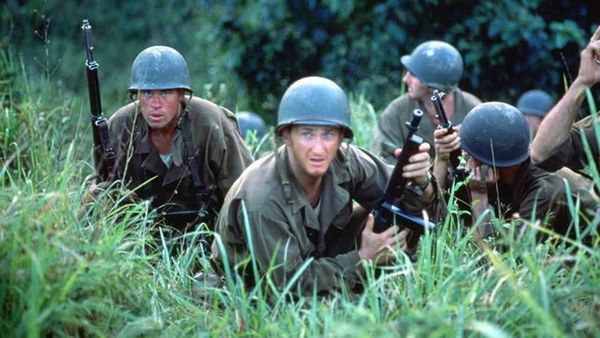The Thin Red Line (1998)

The Thin Red Line (1998): A Profound Exploration of War and Humanity
The Thin Red Line, directed by Terrence Malick and released in 1998, is a war film that goes beyond the traditional narratives of battle and heroism. Adapted from James Jones’ 1962 novel of the same name, the film presents a poetic and philosophical take on war, focusing on the Battle of Guadalcanal during World War II. Rather than glorifying combat, Malick delves into the internal struggles and emotional turmoil of soldiers, making it one of the most introspective war films in cinema history.
The plot revolves around a company of American soldiers tasked with capturing a strategic Japanese position on the island. The narrative is not driven by a single character but shifts through the perspectives of various soldiers, each grappling with their own fears, doubts, and reflections on life and death. Characters like Private Witt (Jim Caviezel), who contemplates the beauty of life amidst chaos, and Lieutenant Colonel Tall (Nick Nolte), who is desperate to prove himself through victory, showcase the wide range of human emotions experienced in war.

What sets The Thin Red Line apart is its focus on nature and the contrast between the tranquility of the natural world and the violence of human conflict. Malick’s use of serene landscapes, interwoven with scenes of destruction and death, underscores a central theme of the film: the duality of peace and war, life and death. The film suggests that nature remains indifferent to human suffering, continuing its cycles regardless of the battles that rage around it.

At its core, The Thin Red Line is not just a war film; it’s a meditation on existence, morality, and the human condition. It questions the purpose of war and examines the ways individuals search for meaning in a world torn apart by violence. Through its reflective monologues and philosophical undertones, the film explores themes of mortality, sacrifice, and the struggle for inner peace amid external chaos.











